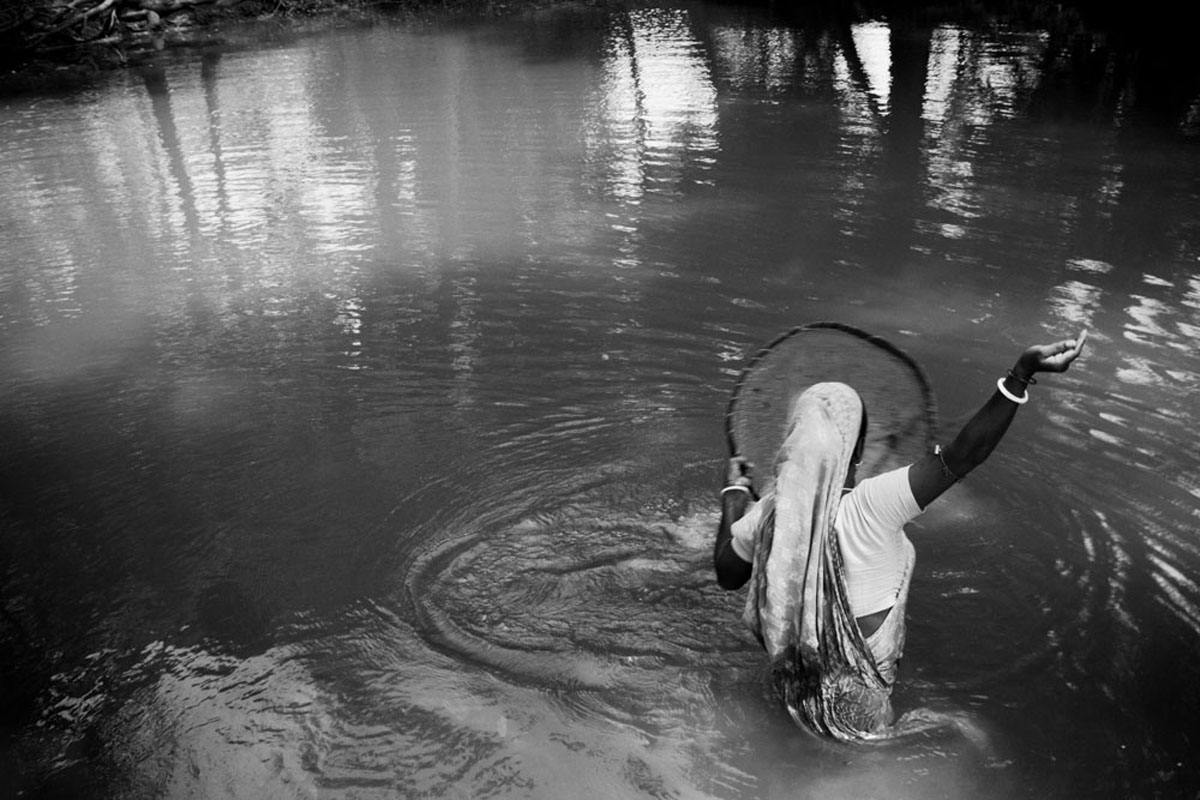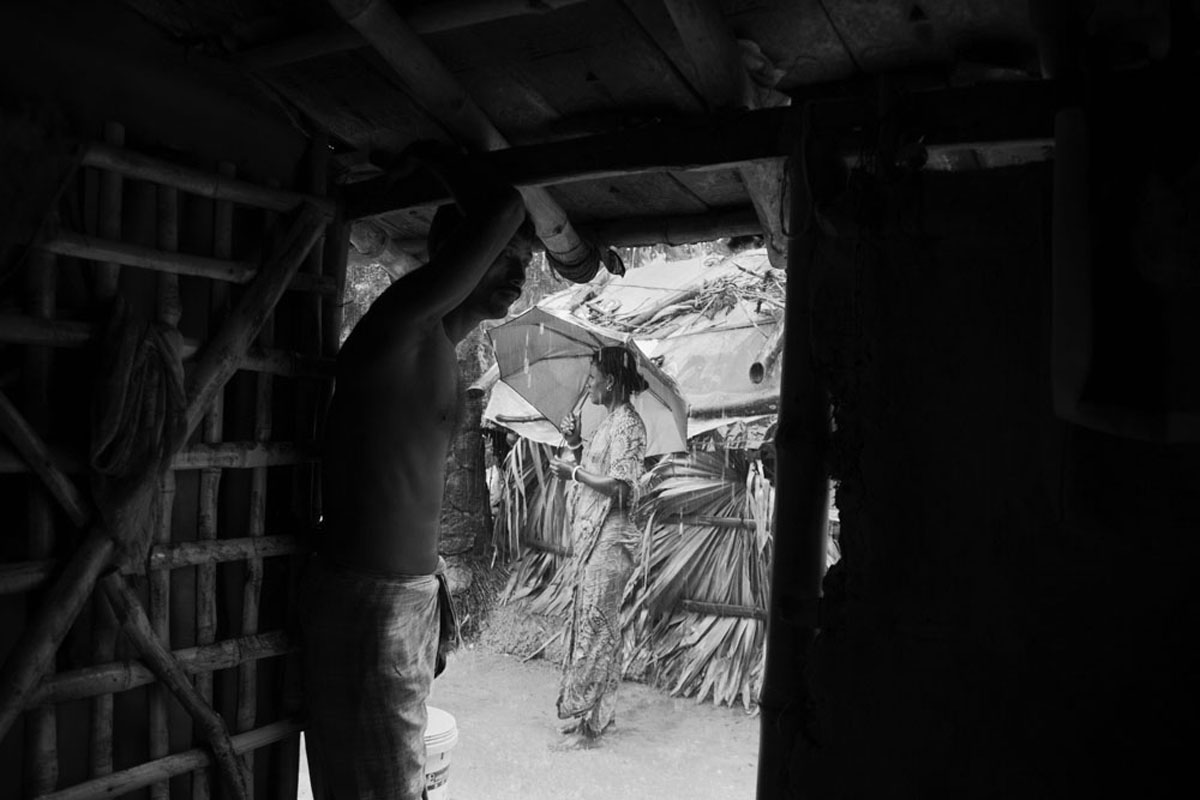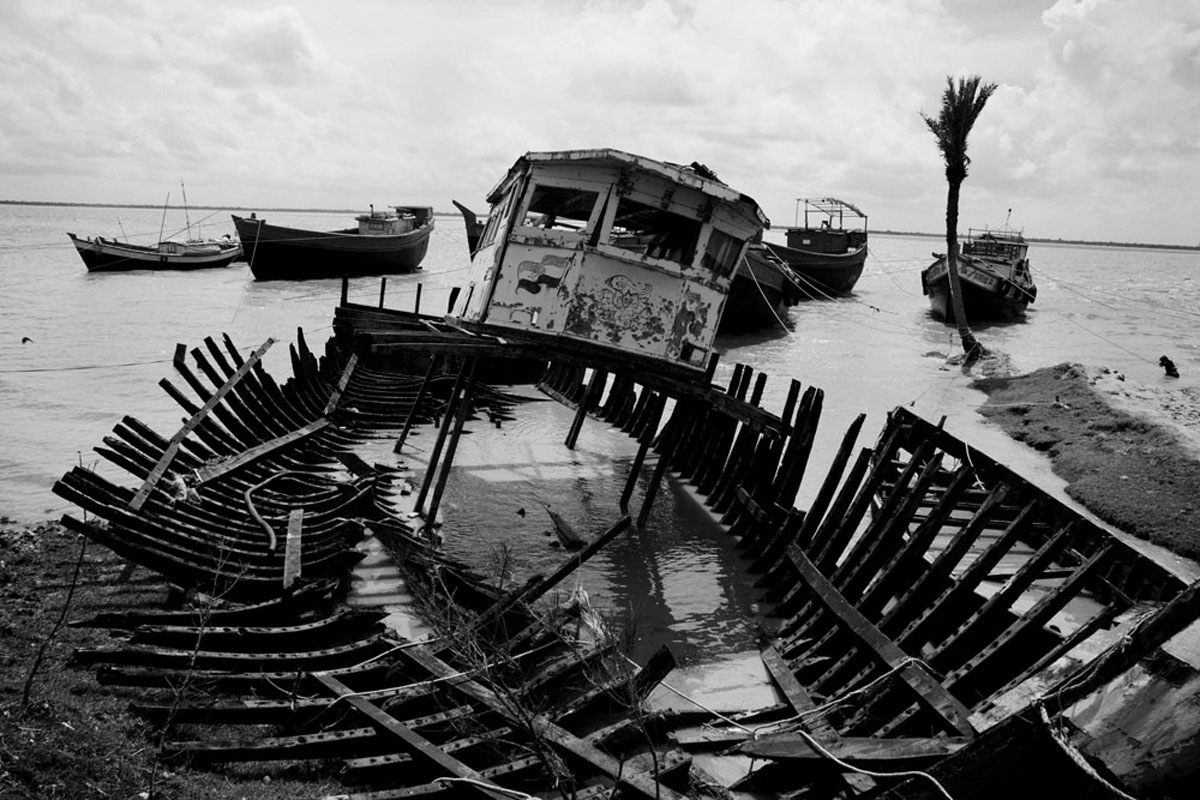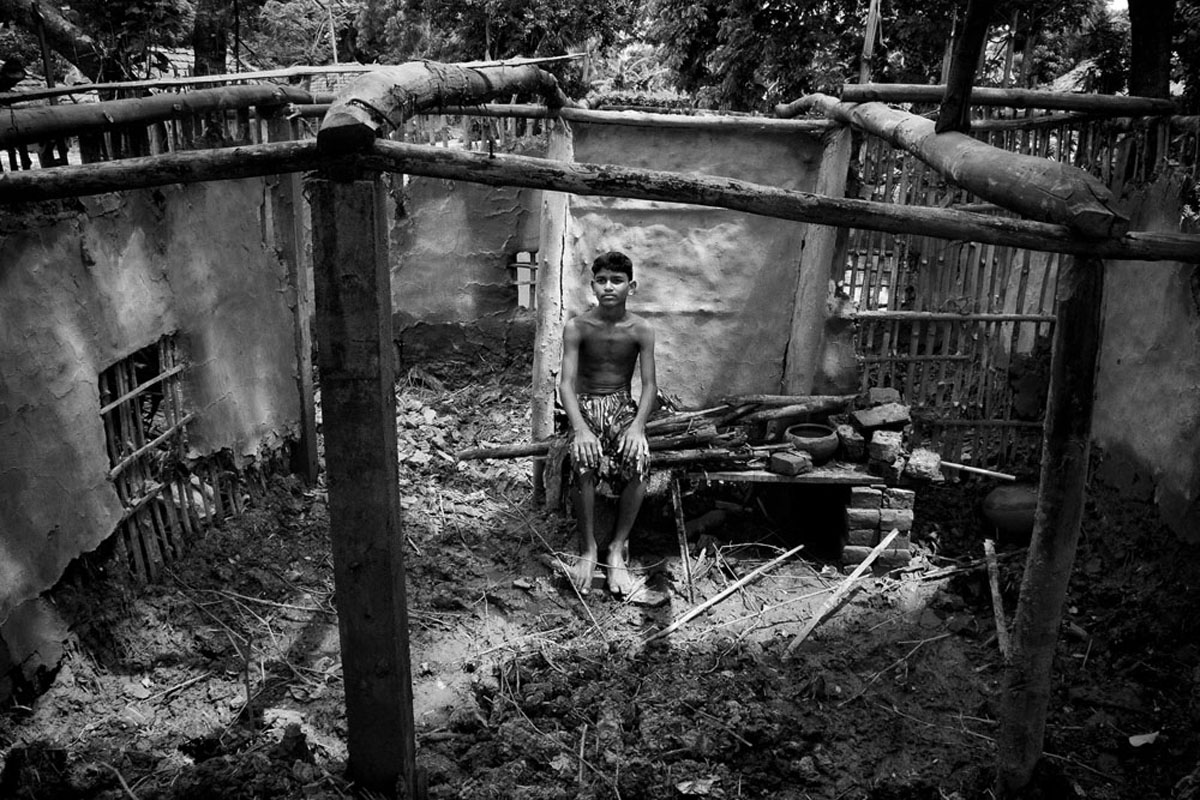What would you do if you saw all that you had in life, sinking right in front of you?
This single question torments five thousand residents of the Ghoramara Island.
The day I landed in Ghoramara, almost one-third of the island was inundated. The embankments gave way to the wrath of the rising waters after almost one and half year. It was full moon and the tide was in full swing, the river swelled and washed away acres of plantation and many animals.

Ghoramara is an island located 150 km south of Kolkata in the Sundarban Delta complex of the Bay of Bengal. The island is small, roughly five square kilometres in area, and is quickly disappearing due to erosion and rising sea levels.

Global warming often causes the river, which is born in the Himalayas, to swell and the fragile embankment is often eroded by the flooding waters.

Tania Khatun, 13, a grade VII student of the Ghoramara Milan Vidyapeeth stands on the fragile coastline of the island. Frequent flooding makes it extremely difficult for students to reach the school.

Rising sea levels and ravaging tidal waves have flooded acres of the island, resulting in an acute shortage of fresh water. In the region, local sea level rise has been estimated at 2.6 mm per year.

With the onset of monsoon, rising water levels pose severe threat of inundation. Several houses along the coast are often washed away.

A dead egret brought down by the projectile of a slingshot.

Several acres of residential and agricultural land have been lost due to cyclonic storms and ravaging tidal waves fuelled by climate change.

Only a handful of families dare to stay along the coastline, haunted by past experiences of nature’s wrath.

Geographically located at the mouth of Bay of Bengal, the Muriganga River which is a tributary of the Ganges connects the island to the nearest harbour, Kakdwip.

Suraj Jamal Mallick, 12, a student of grade VI sits in front of his broken house.

Saraswati Patra,14, stands on the edge of a broken coastline.

Agriculture and fishing are the primary occupations of the islanders.

An old lady waiting for the fishermen to return with the days catch. She has spent all her life on this vanishing island.

“Survival is a constant struggle and conflict for us,” says Urmila Kar, 53 while cooking a meal for her family. There is acute shortage of food and most of the supply comes from the harbour across the river.

Alpona Patra, 12 stands on an almost uprooted tree near the Hathkhola village. Constant flooding and tidal waves deplete the soil and leads to uprooting of trees.

While some residents are looking to migrate elsewhere, those without any means are staying back on the island. Recent studies predict the island will be completely washed away by 2020.
Bio:
Swastik Pal (born 1991) is an independent photographer based in Calcutta. After completing his Post Graduate Diploma in Mass Communication from Jadavpur University, he received a full scholarship to pursue a Diploma in Photojournalism at the Asian Center for Journalism, Ateneo de Manila University, Philippines.
He worked with national and international publications such as Barcroft Media, Open Magazine, The Financial Times (UK) and BBC.
His first personal documentary, “My Uncle Tukka” was selected for Evening Screenings at the Indian Habitat Centre as a part of the Delhi Photo Festival 2013.
